
I will start off by saying that visiting “Shinjuku Gyoen National Garden” in late November…if you are enchanted by the color of leaves, is one of the most beautiful and vibrant places to visit in the world. And in the spring for Hanami (cherry blossoms).
With more than 20,000 trees and 1,500 cherry trees, the place is quite enchanting with the different colors of leaves.
The national garden was once the residence of Lord Naito of Tsuruga in the Edo Period who built the garden back in 1772.
After the Meiji Restoration, the grounds were converted into an experimental agricultural centre and then back to a botanical garden before becoming an imperial garden in 1879.
The garden had to be rebuilt after World War II, as most of the garden was destroyed in air raids back in 1945.
While the gardens would be tied to the Imperial Palace for decades, it came under the jurisdiction of the Ministry of the Environment in January 2001 and became known as the “Shinjuku Gyoen National Garden”.
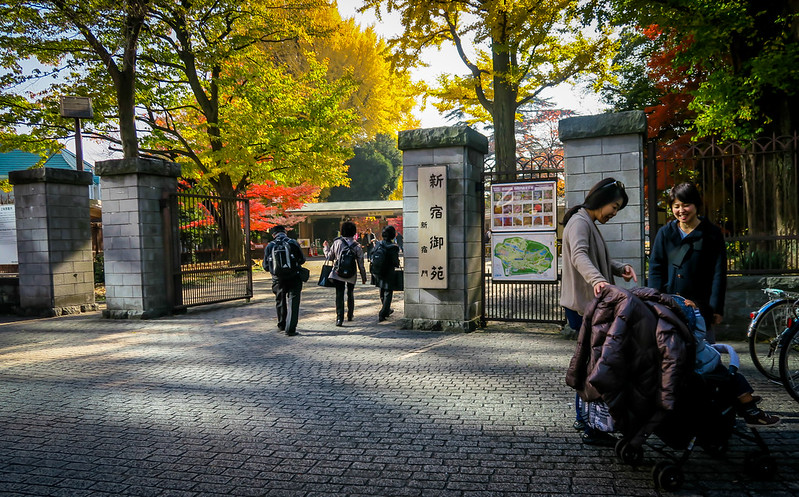
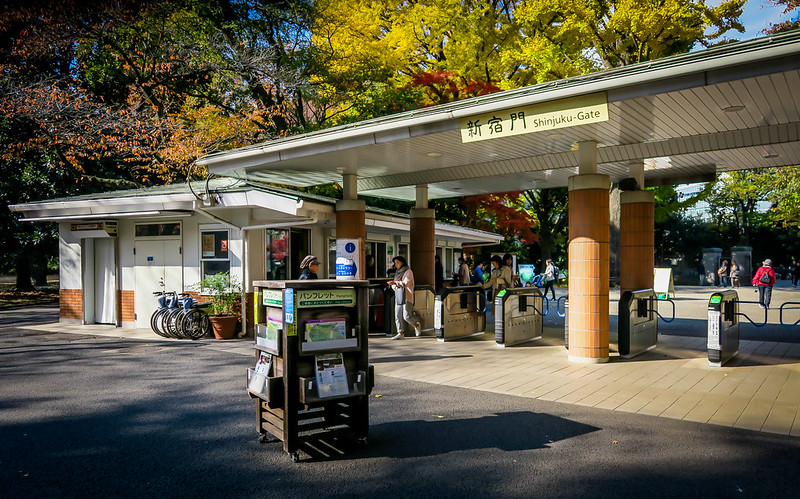
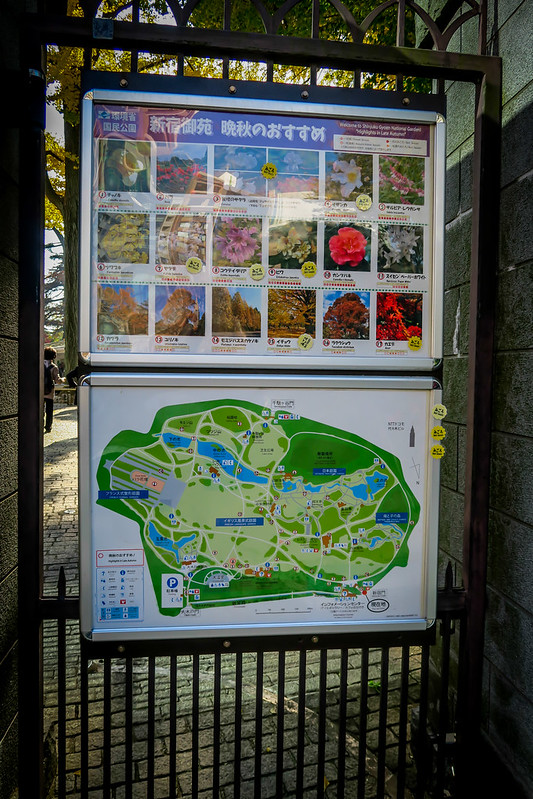
To get to Shinjuku Gyoen National Park, you’ll need to take the metro via Fukutoshin Line or JR Saikyo Line to Shinjuku-sanchome station. Shinjuku Gyoen National Garden is 8 minutes away (700 meters) via walking. Obtaining tickets is easy and straightforward. But once you are in from the entrance, immediately is where you see a lot of the people taking photos of the leaves.
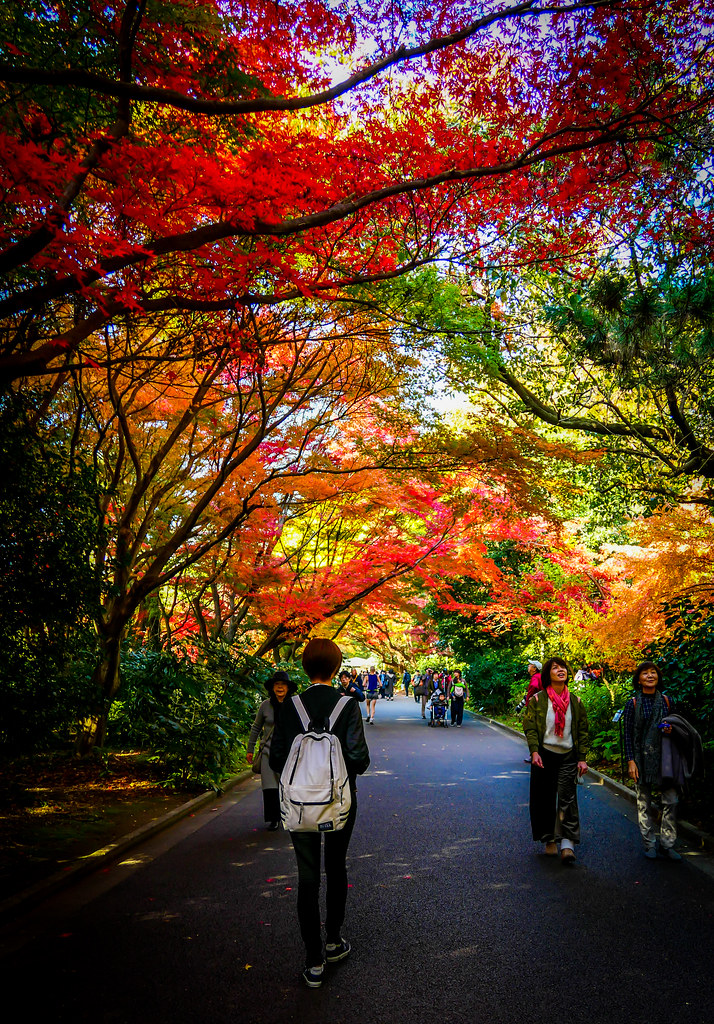
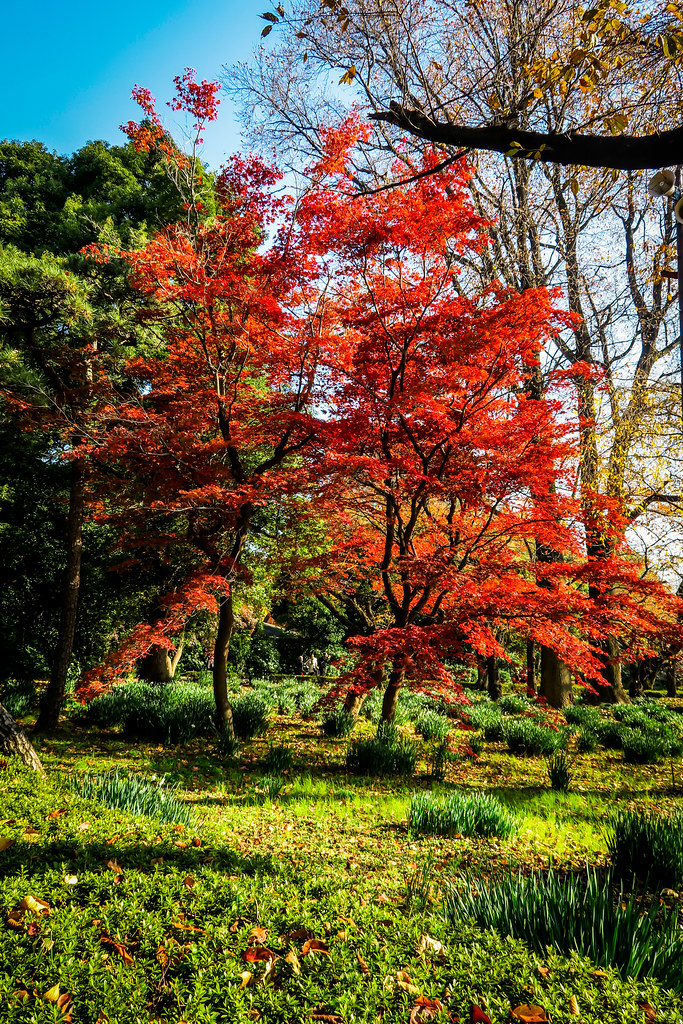
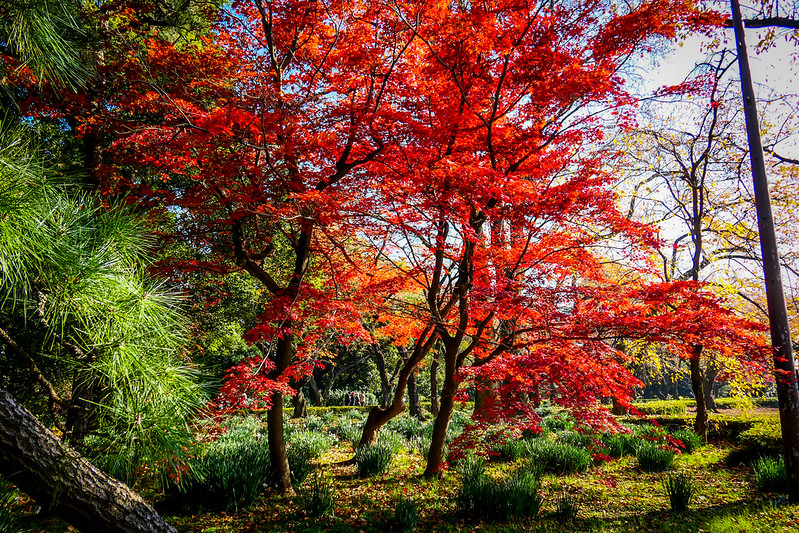
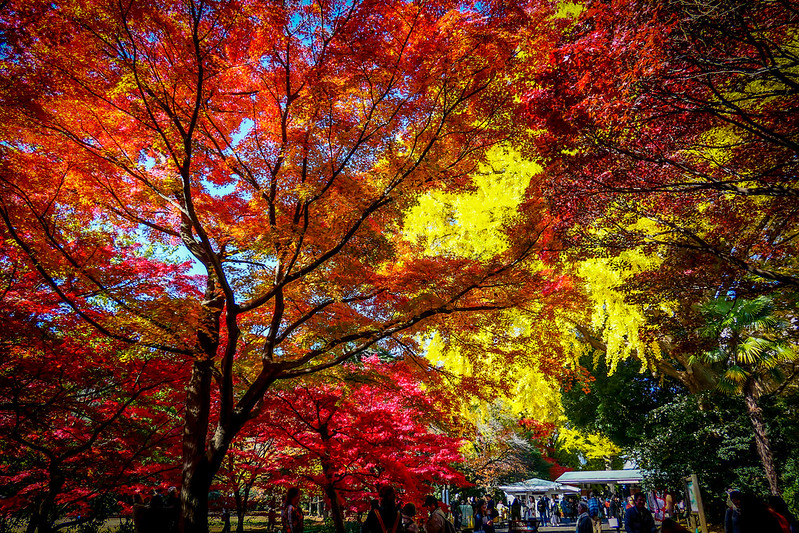
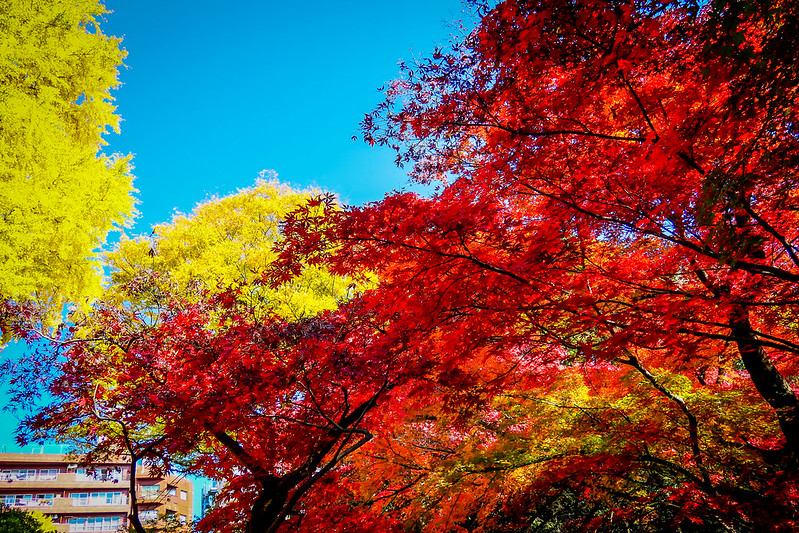
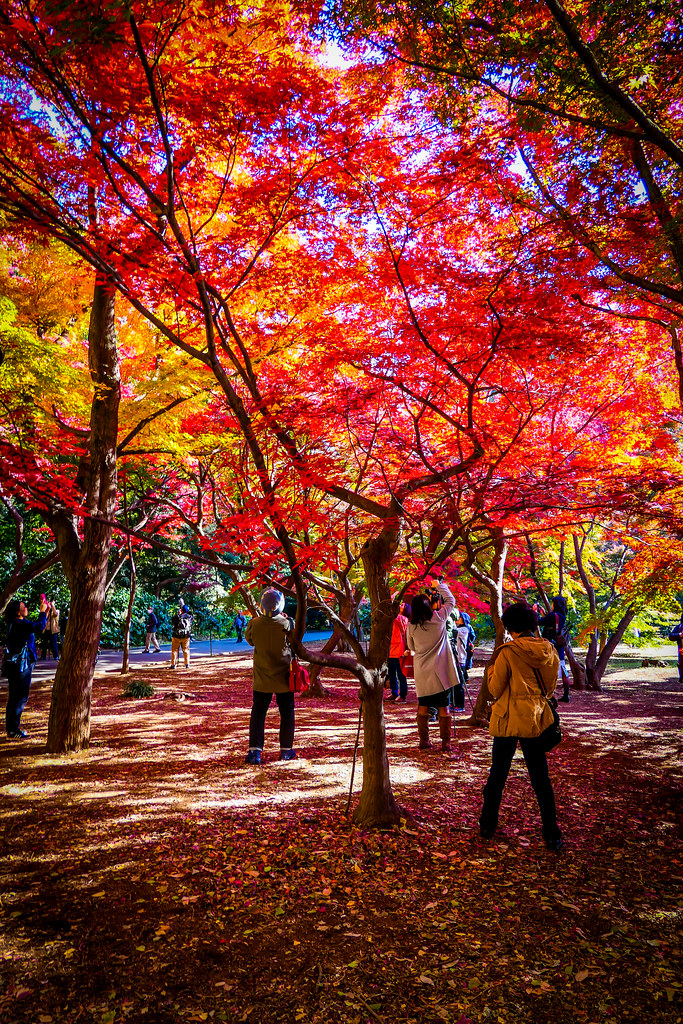
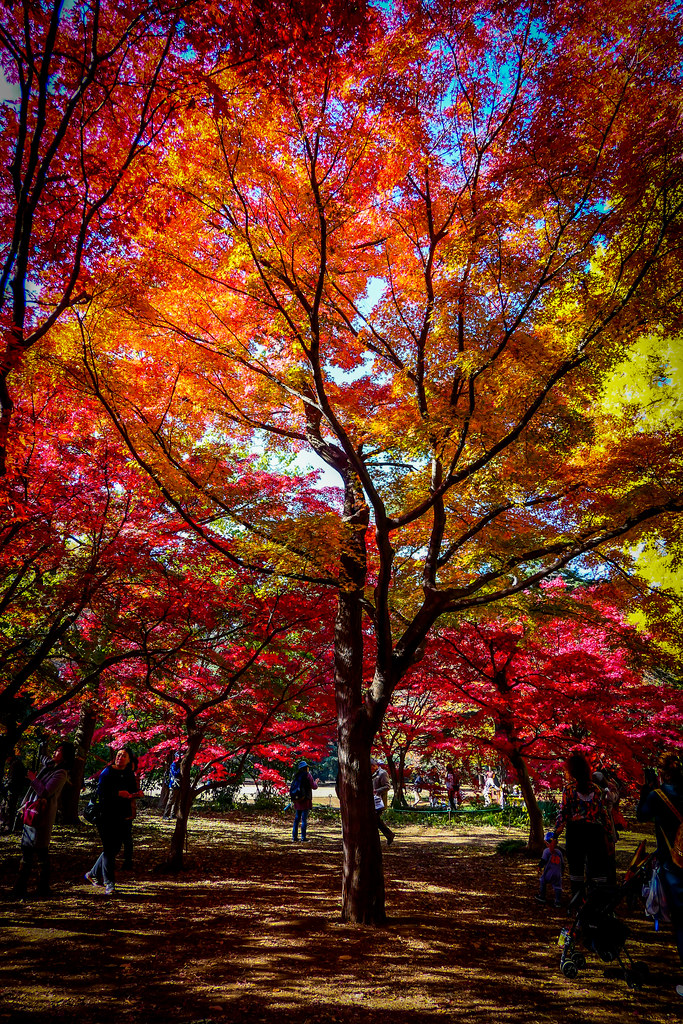


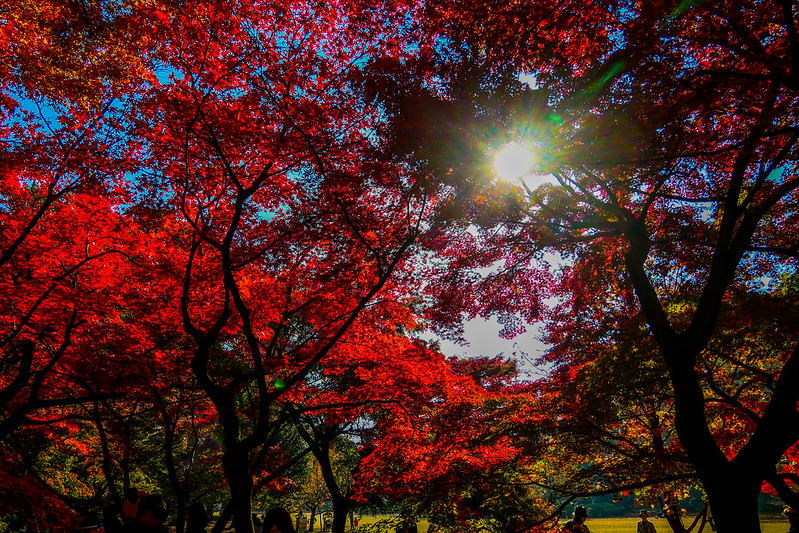

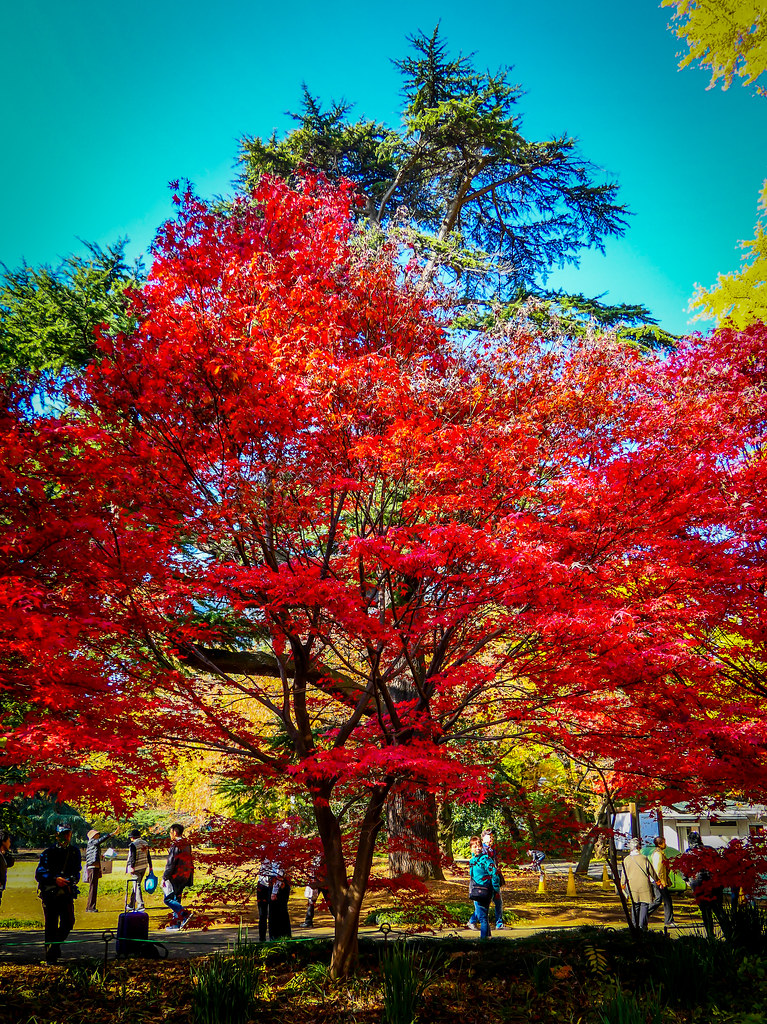
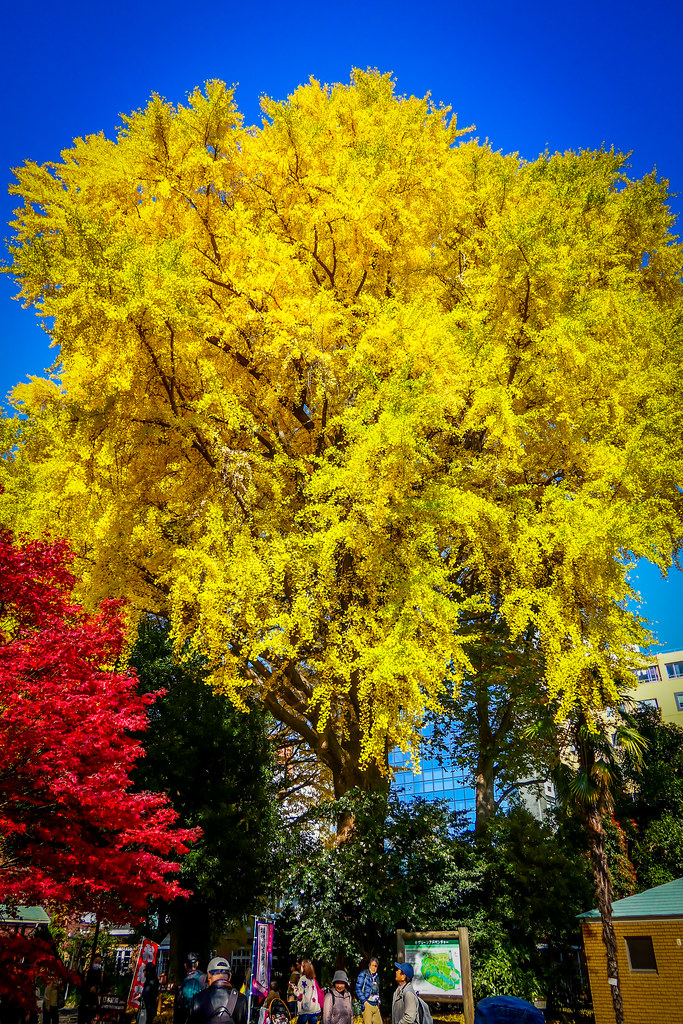
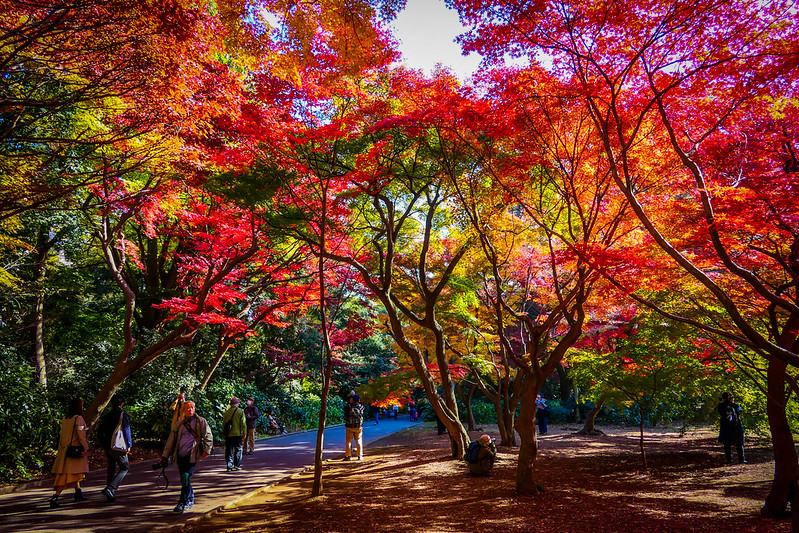
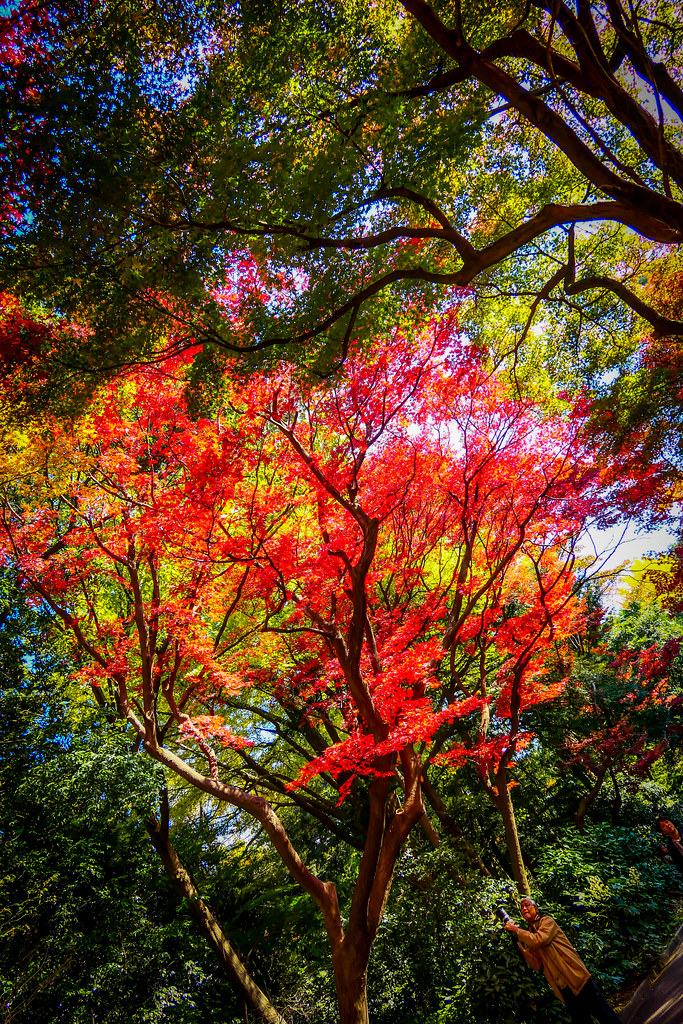
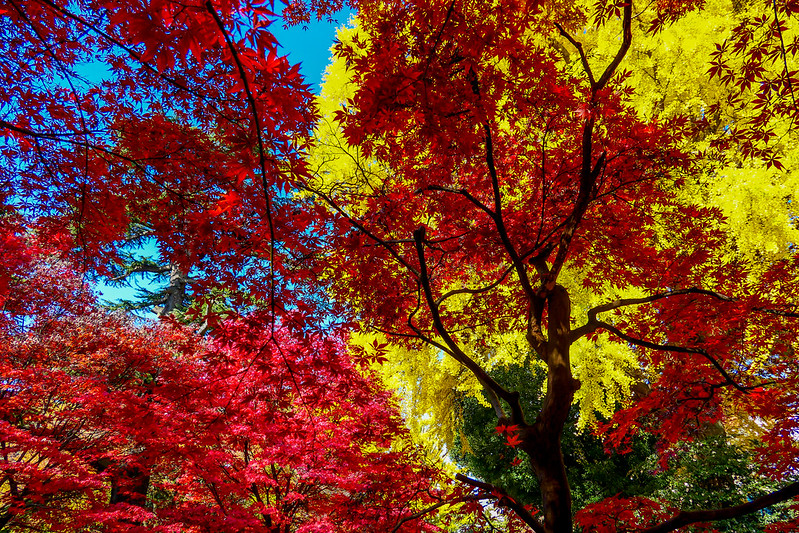
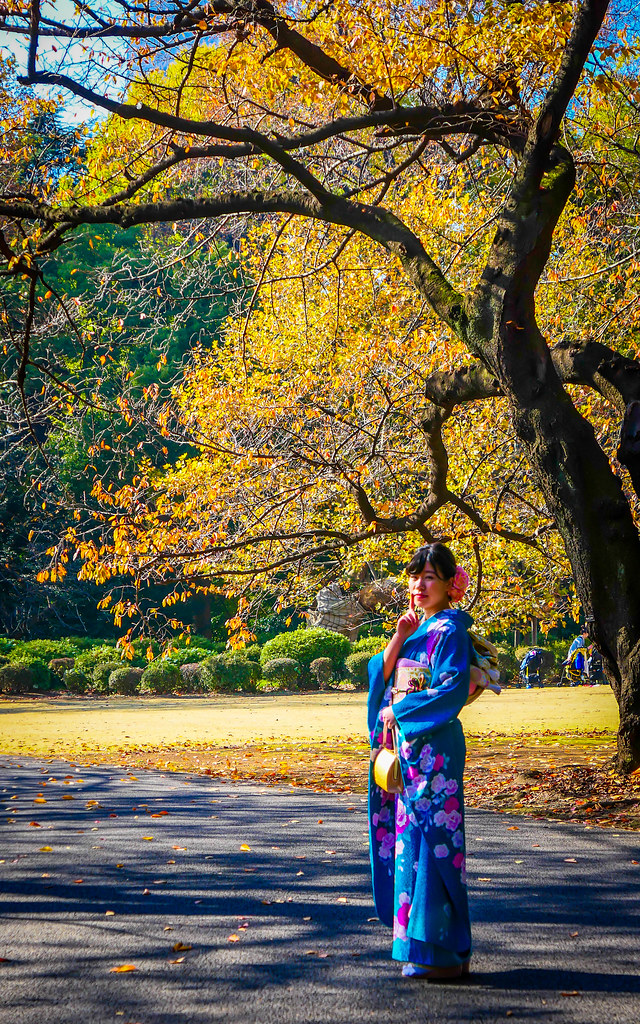
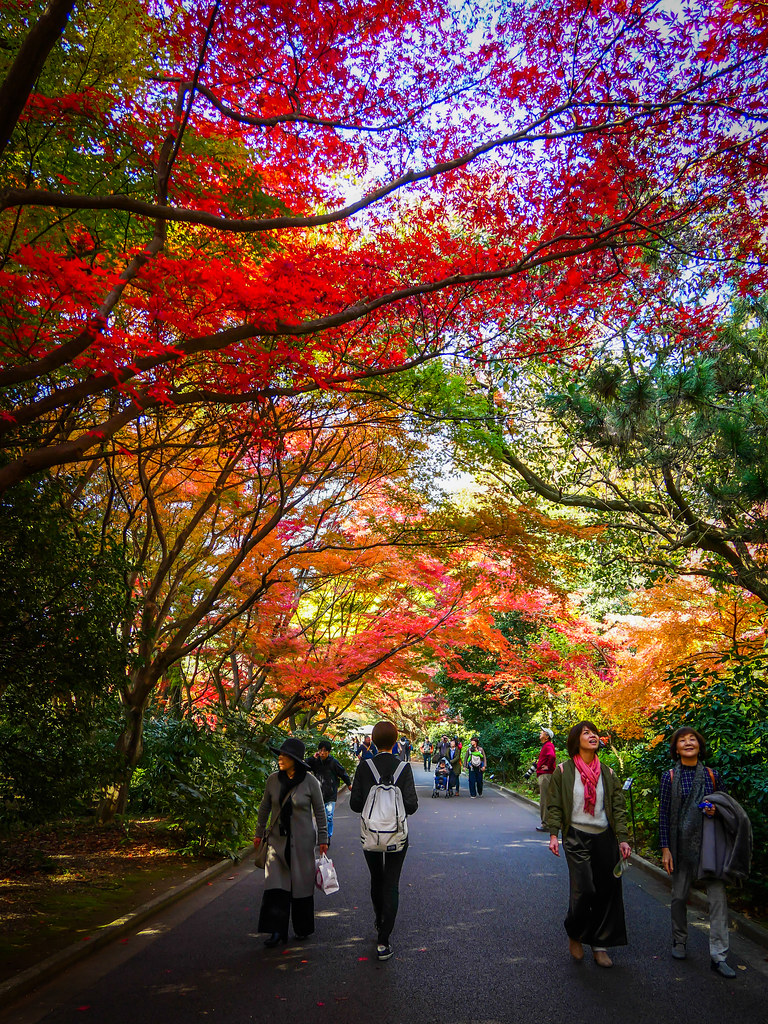
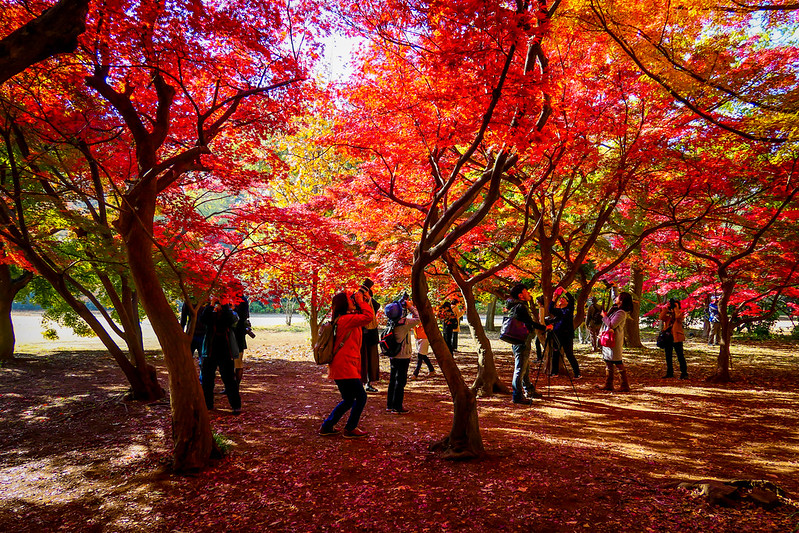
The park is about 144 acres and blends three styles: French Formal Garden, English Landscape Garden and Japanese Traditional Garden.
The park opens at 9:00 a.m. and closes at 4:00 p.m. The admission fee is Y200 and for elementary and junior high school students, the fee is Y50 and for infants, they are free of charge.
One can purchase an annual passport and service dogs and hearing assistance dogs are allowed.
For more information on Shinjuku Gyoen National Garden, please click here.
